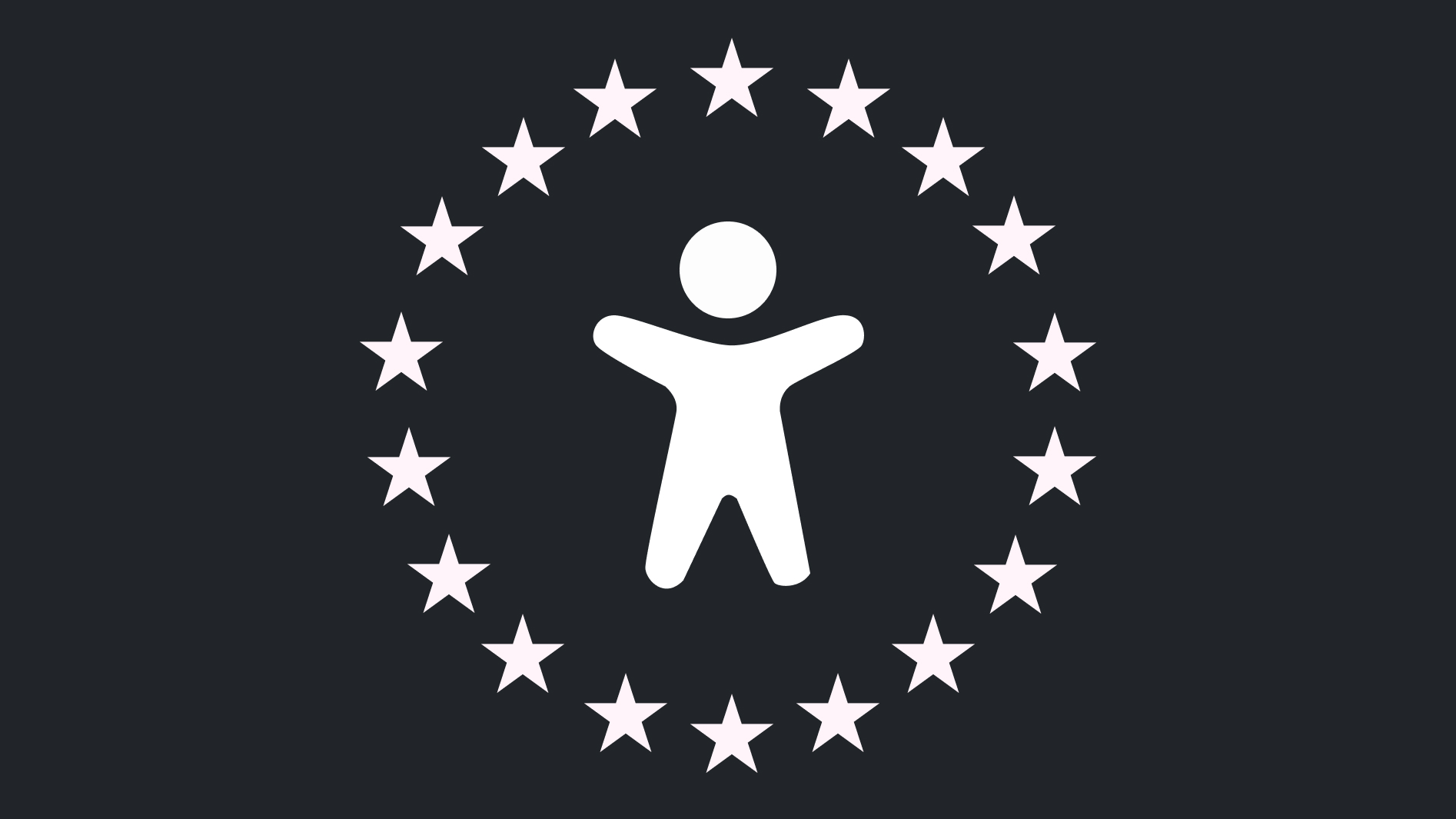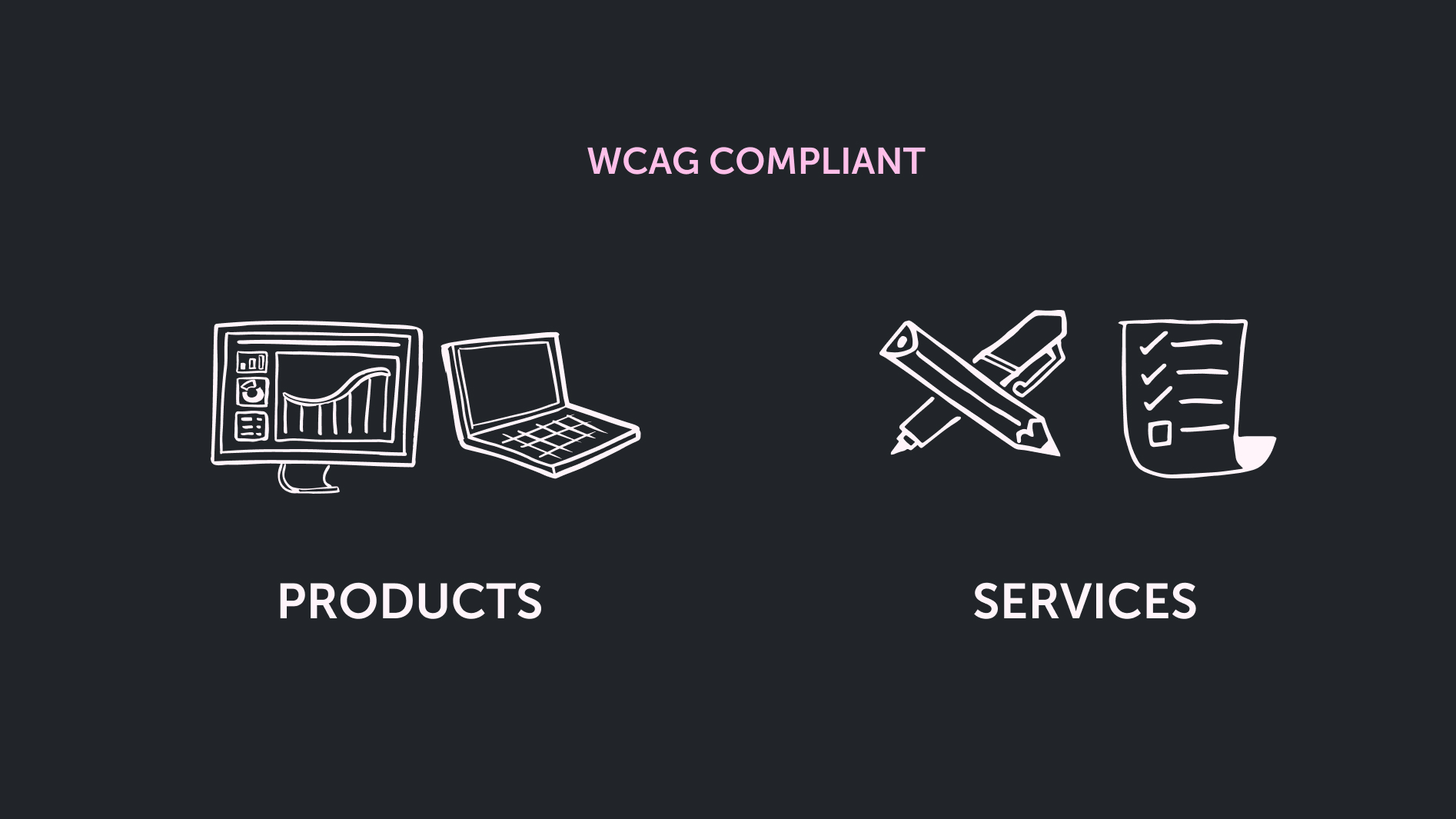
Overview
In this article, we’ll cover the basics of the European Accessibility Act (EAA) and how it might affect your business.
- A brief overview of the EAA itself
- Why it exists
- Which products and services it affects
- Which businesses it affects
- When it comes into force
- Which requirements it uses for compliance
- Potential consequences if you don’t comply
What is the EAA?
The European Accessibility Act (EAA) is legislation from 2019 that aims to enable access for people with disability across the European Market.
Why was the EAA introduced?
It has been created to standardise various European Union (EU) and smaller, local laws with a common set of regulations. Quoting the Act itself, it has been introduced to ensure:
“the EU’s internal market operates smoothly by eliminating and preventing any free-movement barriers that may exist because of divergent national legislation”.
Similar regulations are in place, but these have focussed on public sector organisations. The EAA looks to improve accessibility standards for private sector organisations too.
What is covered by the EAA?
The Act covers various products and services – including both physical and digital interfaces, including:

Products
- Consumer general purpose computer hardware (for example, computers, tablets and laptops)
- Payment terminals (for example, in shops and restaurants)
- Self-service terminals related to the services covered by the EAA (for example ATMs, ticketing or check-in machines)
- Smartphones, tablets and similar devices capable of making calls
- Consumer equipment used for accessing audio-visual media (for example, TV equipment – such as smart TVs involving digital television services)
- E-readers (for example, Amazon Kindle or Tolino e-reader)
Services
- Audio-visual media services (for example, websites or apps for TV channels like BBC iPlayer or on-demand video services like Netflix)
- Electronic communication services (for example, telephony services)
- Consumer banking services (for example, withdrawing money, transfers, online banking and opening a bank account)
- E-books
- E-commerce (meaning, websites or mobile apps through which companies sell their products or services online)
Passenger travel services
The following elements of passenger transport services (except urban, suburban and regional services – for which only self-service terminals apply):
- Websites
- Mobile apps
- Electronic ticketing services
- Delivery of transport information – including real-time travel information
- Interactive self-service terminals (except those integrated with vehicles)
Who does the EAA apply to?
Any product or service covered in the list above, that is released, updated or changed after 28 June 2025 on the EU Market.
This includes products and services provided by companies outside the EU but to customers on the EU Market. So, UK organisations selling to the EU Market would need to comply irrespective of the UK withdrawal from the EU.
Small businesses are exempt if they have:
- Less than 10 people
- An annual turnover or balance sheet total of less than €2 million
When does the EAA come into effect?
All EU member states need to translate the EAA into their local laws. This means each member state needs to add the Act to local laws and set up regulations and related processes so that they can comply.
Each of these member state laws needs to come into effect on 28 June 2025.
Accessibility requirements
To meet requirements for web accessibility a provider must ensure their product or service meets the EN 301 549 standard – which includes the latest version of the Web Content Accessibility Guidelines (WCAG). There may be additional requirements for different states.
What happens if you don’t comply?
As an organisation, we don’t normally focus on the legal arguments for accessibility and inclusion. There are better reasons to prioritise accessibility – including the fact that it is ethically the right thing to do and that it offers a commercial advantage. That said, the EAA will result in penalties, and these will vary depending on things like how serious the issues are and which country you are trading in.
Potential penalties include:
- Fines or prison sentences
- Legal proceedings
- Exclusion from procurement processes
- Damage to brand image/reputation
- Disruption to business
It will become clearer which of the above is likely to apply to your organisation on or before 28 June 2025.
How can we help?
If you think your business might be affected by EAA legislation but are not sure how to check or where to start? Get in touch with us! Our experts, including Alastair Campbell, our Director of Accessibility who co-writes the WCAG guidelines can guide you through the complexities of the European Accessibility Act, ensuring your products and services comply with the new regulations. We offer comprehensive assessments, tailored compliance strategies, and practical solutions to meet the EN 301 549 standard and the latest WCAG requirements.
Don’t risk penalties, fines, or damage to your brand. Let us help you create an inclusive and accessible experience for all your customers. Contact us today to learn more about how we can support your journey towards compliance and accessibility.
We drive commercial value for our clients by creating experiences that engage and delight the people they touch.
Email us:
hello@nomensa.com
Call us:
+44 (0) 117 929 7333




